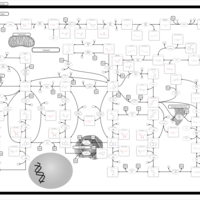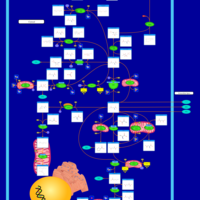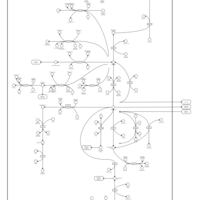| Purine metabolism |    |
| Transcription/Translation |    |
| Glutamate Metabolism |    |
| 2-Hydroxyglutric Aciduria (D And L Form) |    |
| Adenosine Deaminase Deficiency |    |
| Adenylosuccinate Lyase Deficiency |    |
| AICA-Ribosiduria |    |
| Molybdenum Cofactor Deficiency |    |
| Purine Nucleoside Phosphorylase Deficiency |    |
| Xanthine Dehydrogenase Deficiency (Xanthinuria) |    |
| 4-Hydroxybutyric Aciduria/Succinic Semialdehyde Dehydrogenase Deficiency |    |
| Azithromycin Action Pathway |    |
| Clarithromycin Action Pathway |    |
| Clindamycin Action Pathway |    |
| Erythromycin Action Pathway |    |
| Roxithromycin Action Pathway |    |
| Telithromycin Action Pathway |    |
| Amikacin Action Pathway |    |
| Gentamicin Action Pathway |    |
| Kanamycin Action Pathway |    |
| Neomycin Action Pathway |    |
| Netilmicin Action Pathway |    |
| Spectinomycin Action Pathway |    |
| Streptomycin Action Pathway |    |
| Clomocycline Action Pathway |    |
| Demeclocycline Action Pathway |    |
| Doxycycline Action Pathway |    |
| Minocycline Action Pathway |    |
| Oxytetracycline Action Pathway |    |
| Tetracycline Action Pathway |    |
| Lymecycline Action Pathway |    |
| Hyperinsulinism-Hyperammonemia Syndrome |    |
| Lesch-Nyhan Syndrome (LNS) |    |
| Gout or Kelley-Seegmiller Syndrome |    |
| Homocarnosinosis |    |
| Azathioprine Action Pathway |    |
| Mercaptopurine Action Pathway |    |
| Thioguanine Action Pathway |    |
| Xanthinuria type I |    |
| Xanthinuria type II |    |
| Adenine phosphoribosyltransferase deficiency (APRT) |    |
| Mitochondrial DNA depletion syndrome |    |
| Myoadenylate deaminase deficiency |    |
| Succinic semialdehyde dehydrogenase deficiency |    |
| Tobramycin Action Pathway |    |
| Tigecycline Action Pathway |    |
| Arbekacin Action Pathway |    |
| Paromomycin Action Pathway |    |
| Rolitetracycline Action Pathway |    |
| Methacycline Action Pathway |    |
| Lincomycin Action Pathway |    |
| Chloramphenicol Action Pathway |    |
| Troleandomycin Action Pathway |    |
| Josamycin Action Pathway |    |